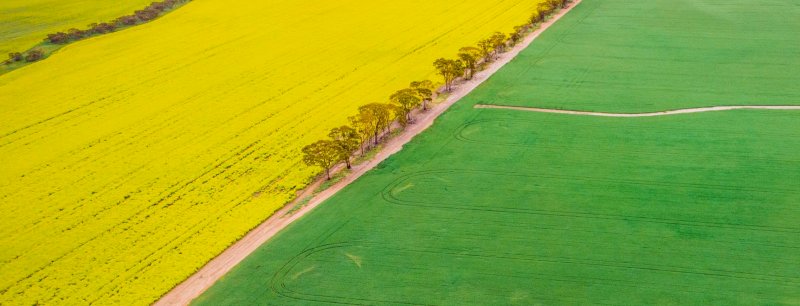AWB - Southern Crops benefit from wet conditions
- By: "Farm Tender" News
- Cropping & Grain News
- Sep 16, 2022
- 365 views
- Share

By Alistair Murphy - AWB
As we pass the halfway mark of the first month of Spring, weather in NSW has remained mild and wet and the majority of forecasting agencies predict the trend to continue through October and November. Moisture profiles are already full so with any decent rain events the risk of flooding is increased as any additional moisture units received convert to overland flow if country doesn’t get a chance to dry out.
Earlier sown NSW crops are continuing to go from strength to strength. The majority of crops sown in the ideal window this year are looking amazing, and recent rain is only going to add to potential of the earlier crop. The later sown crops continue to be a mixed bag, with some later stage crops starting to improve under the cool wet conditions. Though there can be too much of a good thing with other regions struggling due to excessive moisture. The two stage crop combined with cool wet conditions at the business-end of the growing season will delay harvest start dates, and see harvest duration extended given the variation in sowing time from farm to farm.
Crops in South Australia, Victoria and parts of Southern NSW have not experienced the same wet weather issues that their northern counterparts have experienced. The crop in these areas was sown on time and as such are more advanced and benefiting significantly from the wet conditions. Any decrease in production potential in NSW due to excessive moisture issues is expected to be offset by higher production forecasts in the south.
Growers are keeping a close eye on current values as rising variable inputs across the commodities could potentially change which commodity is utilised as the harvest cash crop this harvest. Canola values are still historically high on a decile basis, but the significant jump in the cost to grow the crop may see gross margins become less appealing to sell in comparison to cereals. Chickpea acres are well down this year due to lack of demand and low pricing environment, so it really comes down to a choice between canola and cereals. Which way growers lean, will ultimately come down to yield should prices remain where they are heading into harvest.
International markets continue to trade in a volatile fashion, with the unfortunate situation in the Black Sea region still at the forefront of the industry’s mind. International wheat and corn exchanges have firmed recently over concerns around the Russian – Ukraine export deal. There continues to be concern over ratings in some parts of the United States corn crop, though it appears the industry bears are more focused on the risk of global recession and potential slowdown of growth in China presently.
Canada’s oilseed production is set to make a rebound in comparison to the last few years of serious drought, and the Canadian harvest selling is adding to the softening in canola values here closer to home. With a return to more favorable seasonal conditions durum and protein bread wheat export prospects will increase to a more traditional style trade flow from the North American nation.










Share Ag News Via